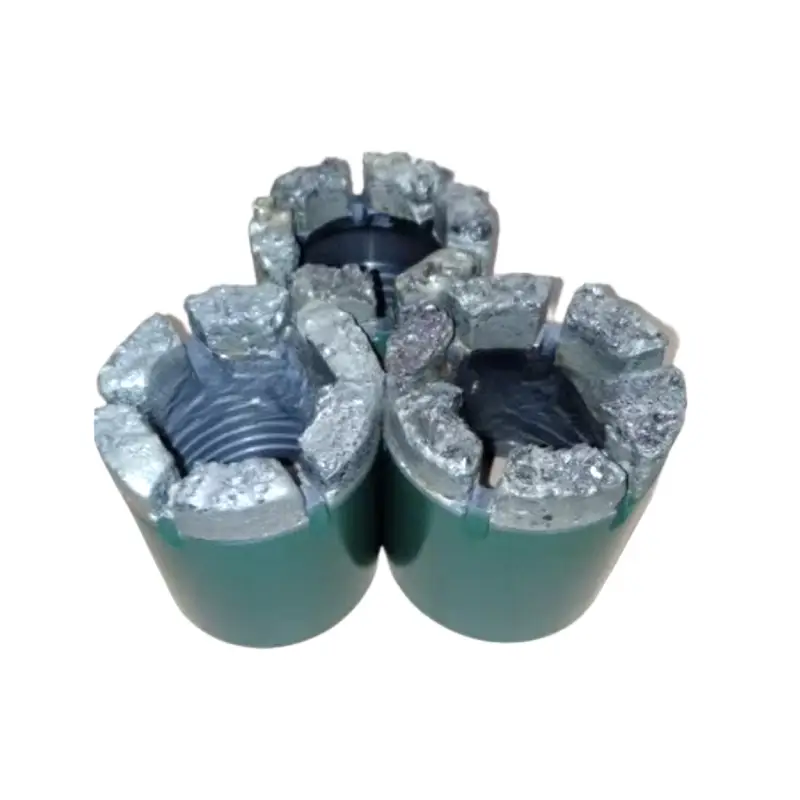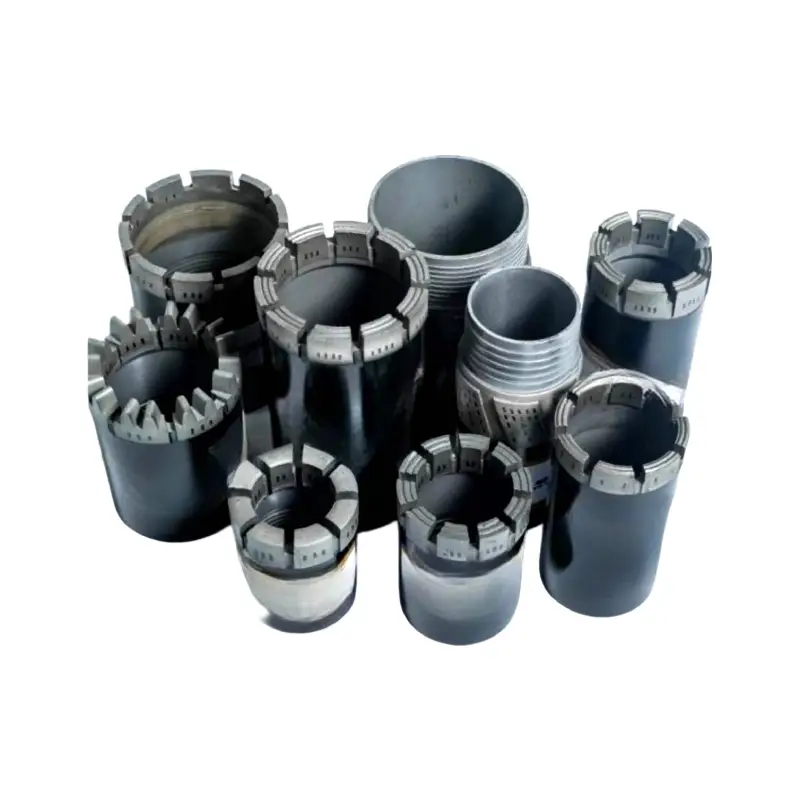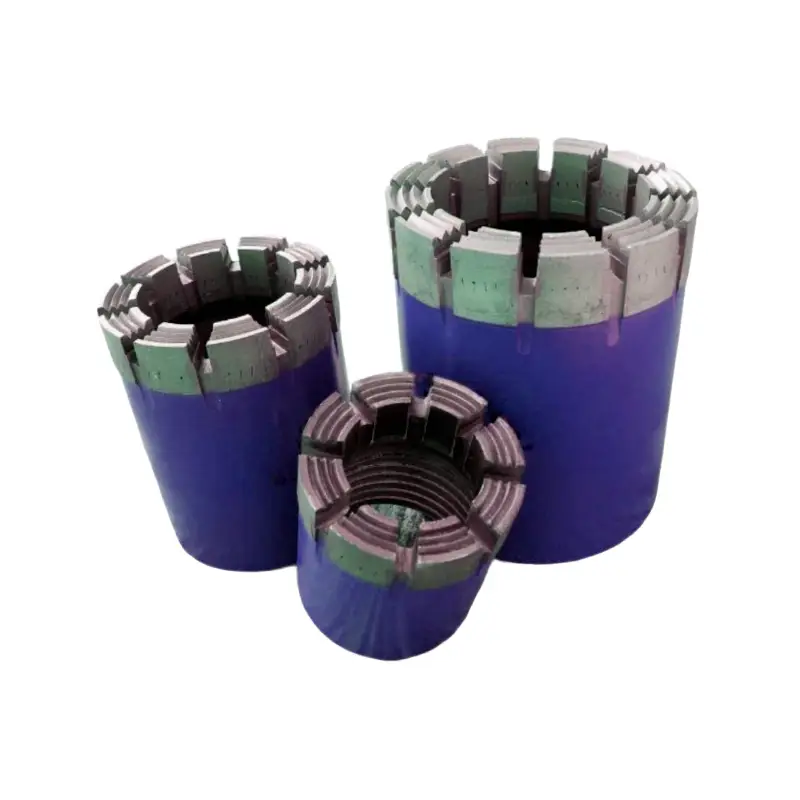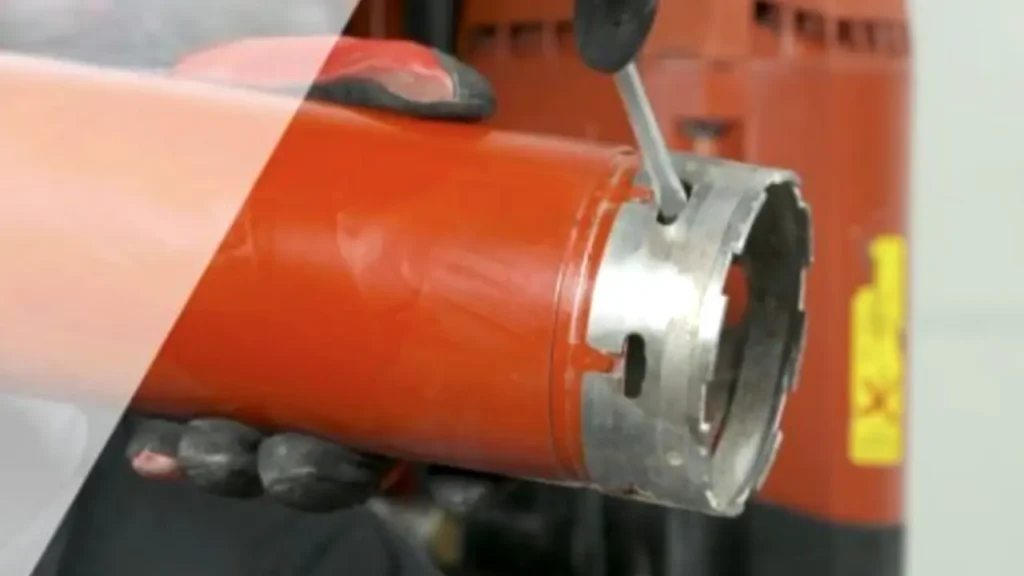Welcome to our guide on safely and efficiently changing a core drill bit. Whether you’re a seasoned professional or new to heavy-duty drilling, understanding this process is crucial for maintaining your equipment and ensuring job-site safety. A correctly installed bit guarantees peak performance and extends the lifespan of your tools.
This guide will walk you through each step, from disengaging the old bit to securely fitting the new one. We’ll cover the necessary tools and highlight key safety precautions to help you avoid common mistakes. Master this skill to maximize your productivity and ensure flawless results on every rock drilling project.
What are Core Drill Bits?



A core drill bit is a hollow, cylindrical tool used to create perfectly round holes in hard materials without pulverizing the entire core. The cutting edge, typically embedded with industrial diamonds or tungsten carbide, is segmented to enhance cutting efficiency and allow for debris removal.
This design focuses the cutting action on the circumference, preserving a solid “core” of the material that is removed after the drilling is complete. This method is highly effective for drilling into concrete, asphalt, rock, and other stone-like materials, making it a staple in construction, mining, and geology.
How to Change Core Drill Bit?

Changing a core drill bit is a straightforward process involving a few key steps to ensure safety and proper installation. This guide outlines the procedure for replacing your core drill bit efficiently, allowing you to get back to your rock drilling tasks quickly and securely.
Step 1: Preparation and Safety
Before you begin, ensure the drill motor is completely powered off and disconnected from the power source to prevent accidental start-ups. Gather the necessary tools, which typically include wrenches suitable for your drill and core bit connections, and wear appropriate personal protective equipment such as safety glasses and gloves to safeguard yourself during the process.
Next, carefully inspect the area around the drill and the core bit for any obstructions or debris that might hinder the changing process. A clean workspace contributes to a safer and more efficient operation. Make sure you have the new core drill bit readily available and that it is the correct type and size for your current drilling needs.
Finally, if the core drill bit you are removing is hot from recent use, allow it sufficient time to cool down to avoid burns. Handling a cool bit is not only safer but also provides a better grip for removal. Taking these preparatory steps ensures a smooth and secure bit change.
Step 2: Removing the Old Bit
Locate the points on your drill motor and the core drill bit where wrenches can be applied for loosening. Typically, there will be flat sections designed for this purpose. Using the appropriate sized wrenches, grip both the drill motor’s spindle or connection point and the base of the core drill bit securely to prevent slippage.
Apply a steady and firm counter-clockwise force on the wrench holding the core drill bit while keeping the wrench on the drill motor’s spindle stationary. This action should begin to loosen the threaded connection. Continue turning until the old core drill bit can be completely unscrewed by hand.
Once the bit is loose, carefully unthread it completely from the drill motor. Be mindful of the weight of larger core drill bits as you fully detach them to prevent dropping and potential injury or damage. Set the removed core drill bit aside in a safe place.
Step 3: Attaching the New Bit
Take the new core drill bit and align its threaded connection with the corresponding threads on the drill motor’s spindle. Ensure that the threads are clean and free of any debris that could impede proper attachment. Begin threading the new bit onto the spindle by hand, turning it clockwise.
Continue to hand-tighten the core drill bit until it is snug against the drill motor. Once it is hand-tight, use your wrenches to securely tighten the connection. Again, grip the flat sections on both the drill motor and the base of the new core drill bit with the appropriate wrenches.
Apply a firm clockwise force on the wrench holding the core drill bit while keeping the other wrench stationary. Tighten the bit sufficiently to ensure it is securely fastened and will not come loose during operation, but avoid over-tightening, which could damage the threads or the bit.
Step 4: Final Checks and Adjustments
After the new core drill bit is securely attached, take a moment to perform a final inspection. Visually check that the bit is seated correctly and that the threads are not exposed or misaligned. A properly mounted bit will appear straight and wobble-free when you give it a gentle wiggle.
If there is any noticeable wobble, it indicates improper seating or a damaged connection. In this case, you must unthread the bit and re-thread it carefully. A perfectly aligned bit is essential for precise drilling and extends the life of both the bit and the drill.
Step 5: Preparing for Operation
With the new core drill bit securely in place, you can reconnect your drill motor to its power source. Before starting any drilling, run the drill at a low speed for a few seconds to confirm that the bit is spinning smoothly and without wobble. This final test ensures your new setup is ready for safe and efficient operation.
When to Replace Core Drill Bits?
A core drill bit’s segments are the main point of contact for cutting. You should replace your core drill bit when it shows signs of wear and tear, as continued use of a worn-out bit can lead to poor performance, increased drilling time, and potential damage to the drill motor. Look out for these indicators:
- The segments are visibly worn down, no longer providing an effective cutting edge.
- The bit is taking significantly longer to bore holes than it used to, indicating a dull cutting surface.
- You notice excessive heat generation during drilling, which is a sign of increased friction.
- The bit is producing a fine powder instead of coarse cuttings, which indicates it’s grinding the material rather than cutting it efficiently.
Tips for Core Drill Bit Maintenance
A core drill bit features a series of diamond-impregnated segments that perform the cutting. Proper maintenance of these bits is crucial for extending their lifespan and ensuring consistent performance. Here are some key tips for core drill bit maintenance:
- Clean the bit after each use: Remove all drilling slurry and debris from the segments and the core barrel. This prevents material from hardening on the bit, which can reduce cutting efficiency.
- Store the bit properly: Keep the bits in a dry environment to prevent rust and corrosion. Storing them in a dedicated case or on a rack protects the delicate diamond segments from accidental chipping or damage.
- Inspect for damage: Regularly check the segments for signs of excessive wear, cracks, or missing pieces. A quick inspection before and after each job can help you identify a problem before it affects performance or causes a tool failure.
- Use adequate lubrication: For wet drilling applications, ensure a consistent flow of water to cool the bit and flush out cuttings. This not only prolongs the bit’s life but also prevents overheating, which can destroy the diamond segments.
Conclusion
Mastering the process of changing a core drill bit is essential for any professional working with rock. By following the proper steps for disengagement and re-attachment, you not only ensure your safety but also protect your valuable equipment. A correctly mounted bit minimizes wobbling, reduces wear and tear, and guarantees a straight, clean cut every time, leading to more efficient project completion.
The right tools are just as important as the right technique. Using high-quality core drill bits designed for rock drilling will significantly enhance your results and reduce downtime. Investing in durable, high-performance bits ensures you can tackle the toughest geological formations with confidence and precision, maximizing both productivity and tool longevity.
For all your professional rock drilling needs, consider partnering with a trusted supplier. For a reliable source of high-quality, wholesale core drill bits designed for the most demanding rock applications, look no further than Sinodrills. Our extensive range of products ensures you have the right tool for any job, backed by expert support and competitive pricing.


